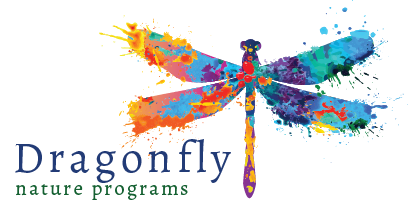“Whenever you read a good book, somewhere in the world a door opens to allow in more light.”
Whether you’ve been incorporating nature-based education into your classroom curriculum for years, or are at the beginning of that shift, providing a thoughtfully stocked classroom library of nature books is an easy, yet valuable method of connecting students with nature. Back in 2019, I wrote a profile for my blog series “The Borrowed Classroom” on a collection of children’s non-fiction nature books that I love, written by Dianna Hutts Aston and illustrated by Sylvia Long. This week, I’ve been preparing my first in-person lesson for the 2021-22 school year on seed dispersal, so my old friend in the series, “A Seed is Sleepy” was dusted off and revisited. All of the old magic is still present; the prose, the content, the colorful illustrations. Reading it again makes me grateful that I teach children so I still have an excuse to walk the stacks of juvenile books at the library, long after my own children have grown out of these beautiful books. Below are my original thoughts on this cherished 6 book series.
Dianna Hutts Aston is a self-described dream activist and an author of both fictional and non-fictional children’s books. She is more than worthy to be the subject of my first author profile. Her partner, the illustrator Sylvia Long, adds more than a touch of colorful wonder to their book series. Ms. Long has illustrated more than 14 books and her work is on display at the National Museum of Wildlife Art in Jackson Wyoming.
The six books in their collaboration can be read to children of any age. Each is wonderfully illustrated and presents accurate information, using scientific terminology, seamlessly defined within the text. I’ve used multiple titles in a variety of classrooms, with children ranging in age from 2 to 12 years old.
Ms. Aston’s writing is not preaching an environmentalist agenda, rather she is sharing her own fascinations with our beautiful natural world. Her books are celebrations of life. As a child herself, Ms. Long was taught by her parents to observe and love nature, which is evident in her detailed artwork. These books are a contagion, infecting children with a sense of delight in nature.
Below is a short description of each of the six books in their nature series. Our local Wake County libraries carries most of the titles. The publisher, Chronicle Books, has written cross curricular lessons to match each book to your local learning standards for those of you looking to tie these books directly to your curriculum. Each book suggests an audience of pre-K to grade 3 and is written at a “P” reading level.
A Seed is Sleepy published March 2014
This book earned a Teacher’s Choice Award. It includes accurate scientific terminology, simply defined, for example: “A seed is generous. It gives the baby plant, or embryo a seed coat to keep it warm.” I embed these and similar terms into my lessons, building working vocabulary in even my youngest students, which will benefit them as they become more independent readers. I appreciate children’s authors who do the same.
An Egg is Quiet published March 2014
Do not skip the inside front and back covers of this book! The inside front cover shows a variety of illustrated eggs while the back inside cover shows the animals that emerge from each. These additional illustrations are true of other titles as well: caterpillars and the butterflies they become, seeds and the plants they develop into. The splendid inside covers add something special to these books and could keep a curious kiddo busy matching for a long while.
A Butterfly is Patient published March 2015
Publishers Weekly Starred Review stated “A lovely mix of science and wonder.” That much is true! Distinct species are featured demonstrating careful research. The information and illustrations are accurate and examines species you’d see the world over. Such terrific terms and phrases are used: kaleidoscope, scales, Lepidoptera, puddle club. Each is plainly defined. The last two pages of this book build so the reader is left with a freeing image of wild, soaring butterflies: “A butterfly is patient. The egg hatches, the caterpillar emerges feasting on leaves before it wraps itself into its warm protective chrysalis, patiently waiting……to soar!”
A Rock is Lively published March 2015
Take it from a biologist who is not keenly interested in rocks, this book about rocks invokes an enthusiasm in both me and my students! The book covers geologic time, minerals, connects the value of rocks to animals and humans alike and introduces the rock cycle. Ms. Aston and Ms. Long definitely bring geology to life in this sweet book.
A Beetle is Shy published March 2016
Kids love insects and beetles are a varied and interesting group! This book celebrates their colors, sizes, adaptations and even where they are eaten by humans around the world. Junior entomologists are born from books like this one!
A Nest is Noisy published March 2017
This was the last book written in the series. It is a peek into the animal kingdom and the wildly diverse nests that are built or borrowed, in all sorts of habitats on Earth. Kids thrive in the anticipation of an egg nestled away and excite in the lively activity of a nest. They love to learn about various parenting behaviors of animals. This book relays that information, cleanly and precisely, in both prose and picture.
I’d love to hear what you think of these books and if you know of an author or series I need to check out, please share! Happy reading, Rachel

